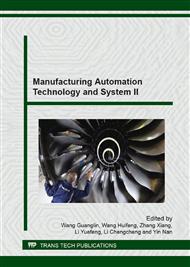p.233
p.239
p.246
p.253
p.260
p.268
p.274
p.282
p.288
Research on Modelling and Experiment for Passive Adaptive MR Damper Based on GMM Inverse Effect
Abstract:
Aiming at the limit of energy in quakeproof, aerospace and field ordnance, and requirements for damper’s different damping force in vehicle vibration’s pull and press stroke, a passive adaptive MR damper was designed and made. Passive adaptive MR damper is a new type of damper based on GMM inverse effect and MR effect, and it doesn’t need energy devices and can realize external force self-adaptation. A model of passive adaptive MR damper is established based on Jiles-Atherton model, the law of approach for the magneto mechanical effect, the magnetic circuit law and Bingham model. Experimental results show that the value of damping force is related to displacement and velocity: the larger the displacement, the greater the damping force; the faster the speed, the greater the damping force. This is consistent with the model. The damper has characteristic of load adaptive. Feasibility of the design was verified.
Info:
Periodical:
Pages:
260-267
Citation:
Online since:
August 2014
Authors:
Keywords:
Price:
Сopyright:
© 2014 Trans Tech Publications Ltd. All Rights Reserved
Share:
Citation:


